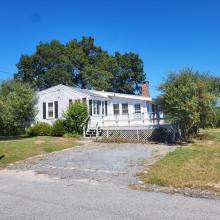Historical society reflects on Marion’s segregated past
MARION — Andrew Santos still remembers his first day at Sippican School.
“The Plymouth County Sheriff and my mother walked me into the school,” said Santos. “They walked me right past three school board members standing in the front door.”
In June 1947 the Marion School Committee voted to segregate the town’s schools, explained Rick DaSilva during a talk on Wednesday, Feb. 1.
DaSilva is the director of equity affairs at St. Mark’s School in Southborough and a former history teacher at Tabor Academy.
White children attended Sippican School, said DaSilva, while many Portuguese, Cape Verdean and Azorean children attended Point Road School, which was built in 1929 to accommodate these growing populations.
When Santos was six years old, his mother approached the Marion School Committee to enroll Santos as a Sippican School student due to her disappointment in the overpopulated and understaffed Point Road School.
I’ll never forget that morning,” said Santos.
“There weren’t really any schools available to bring people, especially [immigrants], together to learn English and to be educated,” DaSilva said.
However, the construction of the Sippican School in 1937 brought racial tensions to a head.
“As Marion began focusing on Sippican School, and building and adding a cafeteria, people began to forget about [Point Road School],” he said.
DaSilva, who was a member of Marion’s Portuguese community in the 1970s, reflected on a historical report compiled by Claire Dempsey.
According to DaSilva, immigrants from Portugal, Cape Verde and the Azores migrated to Marion in the late 1900s looking for work as laborers in the cranberry industry.
“Everyone was single men,” DaSilva said, referring to those who migrated to Marion. “[They] got a job, paid for rent and eventually paid for their families.”
Neighborhoods such as Gifford’s Corner, Hamblin’s Corner and Point Road became hubs for these communities due to their proximity to cranberry bogs.
According to DaSilva, more opportunity for work allowed the communities to grow and develop nuclear families by the 1930s.
DaSilva hopes to gather and share more stories like Santos’s.
“The intention wasn’t to try to tell the stories [tonight],” said DaSilva. “My hope is that if you're here that it will jog your memory of your own stories.”
Members of Marion’s Portuguese, Cape Verdean or Azorean communities can share their stories with Rick DaSilva at rickdasilva@stmarksschool.org.



.jpeg)











